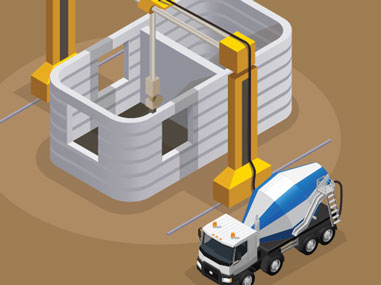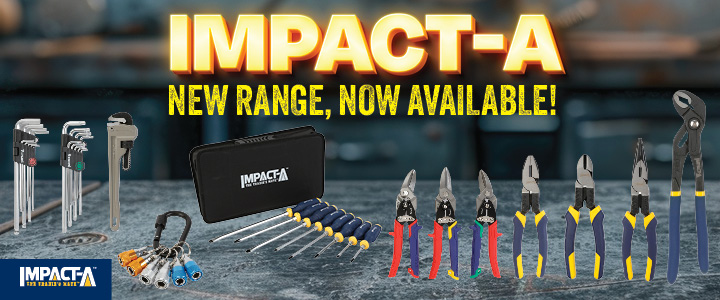3D house printing as a fast, affordable, sustainable housing solution may very well be the ‘disrupter’ that conventional building needs.
By Kerry Faulkner
Luyten’s 3D printed home from a discussion among a bunch of friends, all with PhDs in mechatronics and aerospace engineering, who wanted to solve the global problem of building homes more efficiently.
Since then, they’ve successfully built a protype in a Melbourne warehouse and production has begun on their first new home for public consumption, which is for the Ilpeye Ilpeye community near Alice Springs, and is on target to be delivered by the end of the year.
It’s expected to be the first built there as part of a project that will also have philanthropic benefits, providing a business model for the local Indigenous corporation to give its community affordable housing.
However, the printer’s creators at Luyten, a small Australian start-up, say construction using 3D printing is not limited to affordable housing. The technology can be applied equally to more high-end construction, where clients benefit from the freedom to design their homes with more flair using curved and even circular walls, for example, and where decorative elements like Corinthian columns can be printed rather than cast and shipped to site.
They describe it as ‘digitising architecture’—all the cuts for the ‘sparky’ or plumber already exist in the design, eliminating the need for drilling or cutting.
They predict a 3D printed home can reduce construction time by 60 per They predict a 3D printed home can reduce construction time by 60 per cent, production time by 70 per cent and labour costs by 80 per cent over a traditional timber framed home.
The benefits of a printed home
Master Builders Australia predicts Australia is headed toward a major supply ‘cliff ’ estimating the country will fall short of demand by 250,000 timber frames by 2035.
CEO Denita Wawn says the cost of building materials is soaring at its fastest rate in more than 40 years with delays and shortages in labour and products continuing to obstruct building activity.
“For our industry, the most immediate challenge relates to the supply of building products and the people we need to carry out the work,” she says.
One of Luyten’s 3D printer creators Ahmed Mahil says overcoming those shortages is just one of the many benefits of the printed home. It replaces the need for multiple products including timber frames and bricks and mortar with just two—recyclable concrete and foam insulation.
In addition, the greatly reduced construction time makes 3D printed homes particularly appealing in remote and regional areas where the added cost of shipping trades people and materials to jobs can be crippling.
An idea takes shape
Mahil says those very early discussions with his colleagues that gave birth to Luyten’s 3D printed home centred around the idea that academics have successfully applied robotics to medical science, the pharmaceutical, automotive and food industries, so why hadn’t they applied it to the building industry?
“And then we realized that maybe the problem is that the folks who do robotics, like ourselves, are not actually providing that industry with enough products,” he explains.
“Look at the power drill, for example; now it works with the battery but back in the day, power drills with their long electrical cords were a very specialised thing. And now the wider community is using power drills in their DIY projects as well.
“From that principle, we thought to bring robotics to construction, and to build a proper robot, rather than repurposing industrial robots and do something just in a warehouse.
“Now we have made a robot able to go to the site. Our printers are mobile, easy to transport and they don’t need reassembling; they change their size like robotic transformers.”
The financials
In addition, a 3D printed home has a smaller carbon footprint by reducing the number of workers on site from 30 to just four or five, using fewer materials and eco-friendly cement that can be recycled and reused in footpaths for example.
The outlay to purchase the technology is estimated to be between $270,000 and $300,000 for an Australian made product and up to $800,00 for an overseas product.
Mahil says the clincher is that the investment in a 3D printer has the potential to make small building businesses, which often ‘live on the edge’ financially, much more profitable.
“Bear in mind 95 per cent of the construction industry is small businesses and margins are really tight even though they charge a lot because of the archaic ways they’re building,” he says. “So, when you introduce this kind of technology, you’ve made this whole business more feasible.”
Luyten is not the only company in Australia ready to produce 3D printed homes. Melbourne company Fortex has partnered with Danish-based company COBOD International to bring a product to Australia. COBOD printed Europe’s first 3D printed home in 2017. A spokesperson for Fortex says its first machine is landing later this year and will undergo ‘a significant period of testing’ to obtain valuable data.
Fortex CEO David Lederer agrees the technology also makes construction greener, more durable and provides greater design freedom than traditional methods. He calls it the ‘disrupter’ conventional building needs.
Mahil further adds that he and his colleagues at Luyten believe that having and owning a house shouldn’t be a dream.
“It should be a right, and through technology, we can bridge that gap.”






